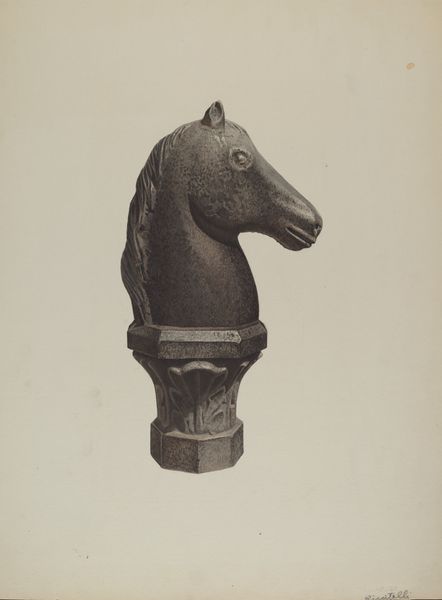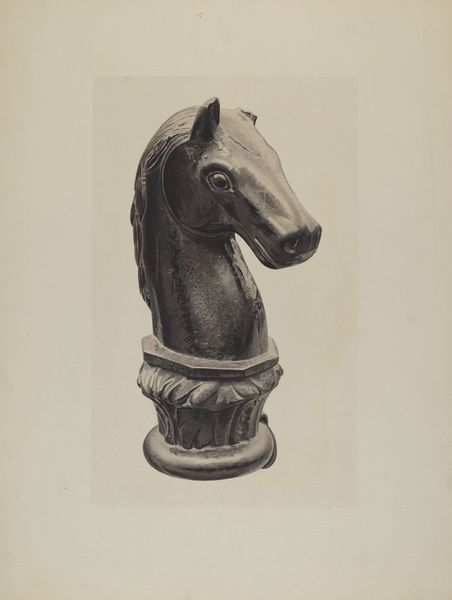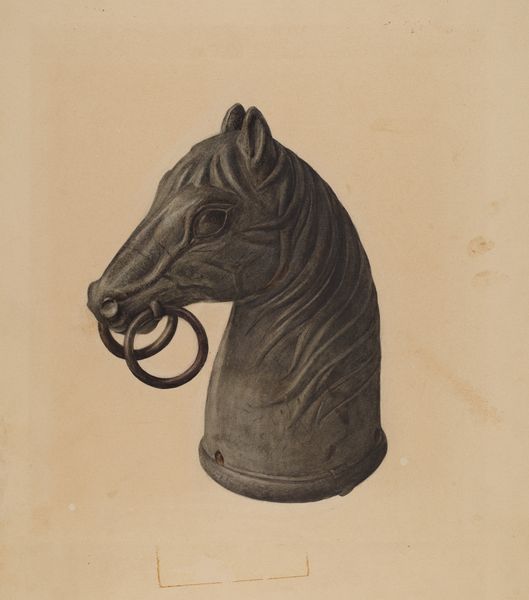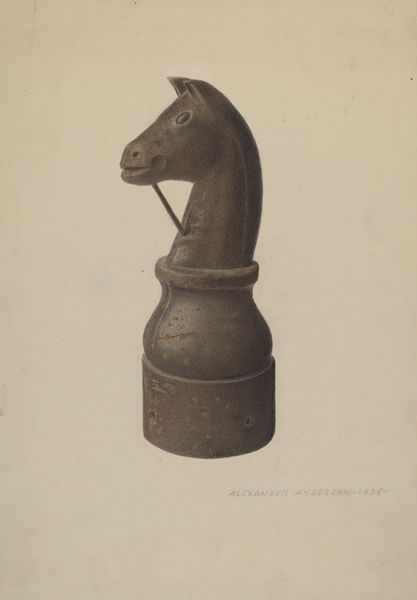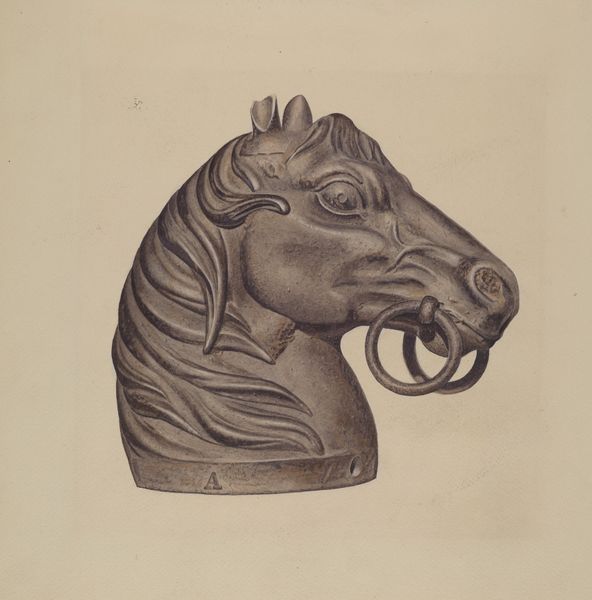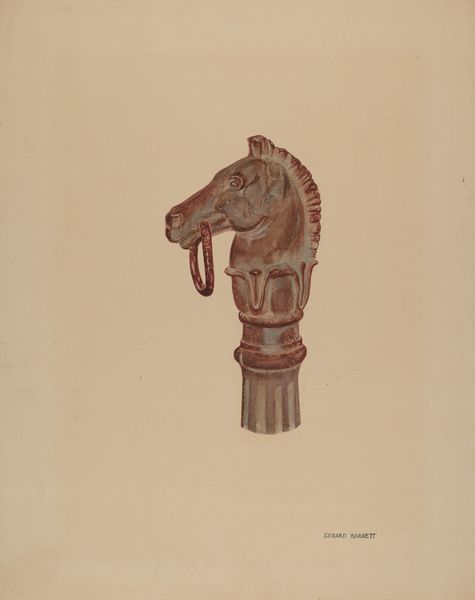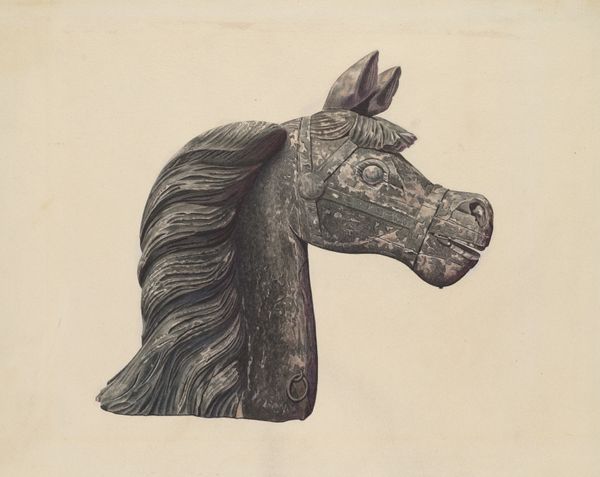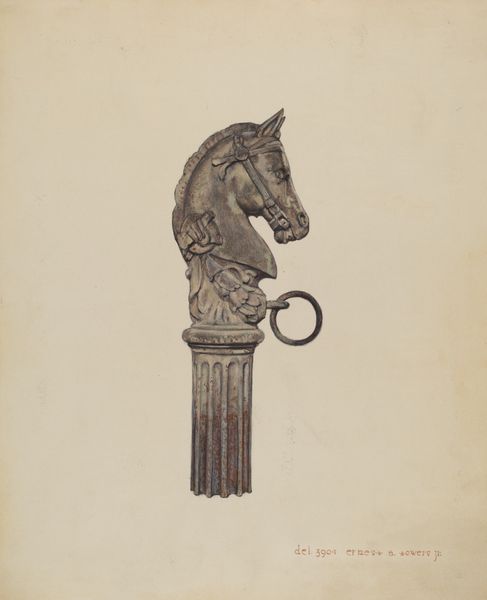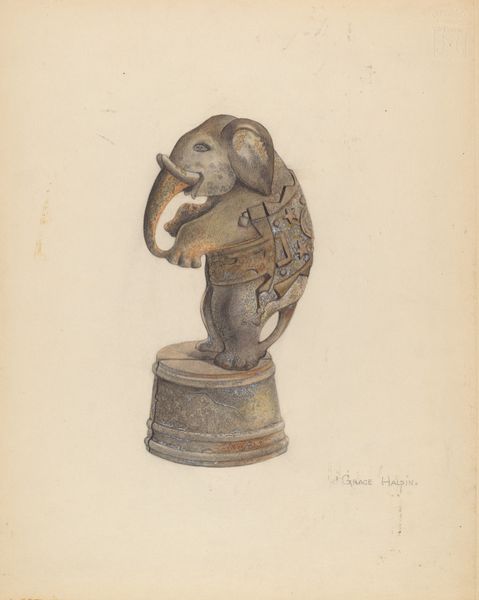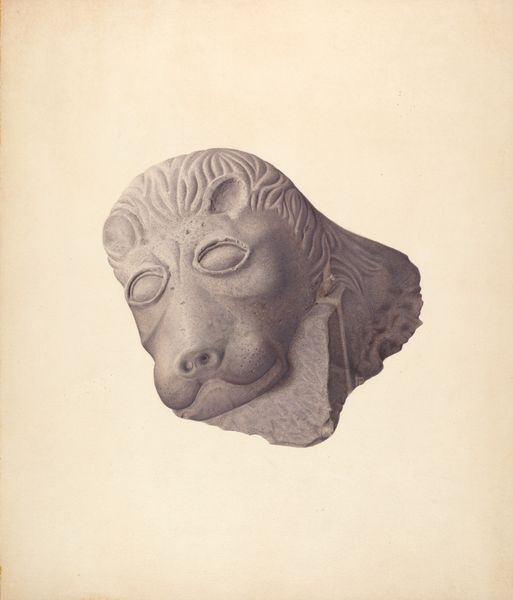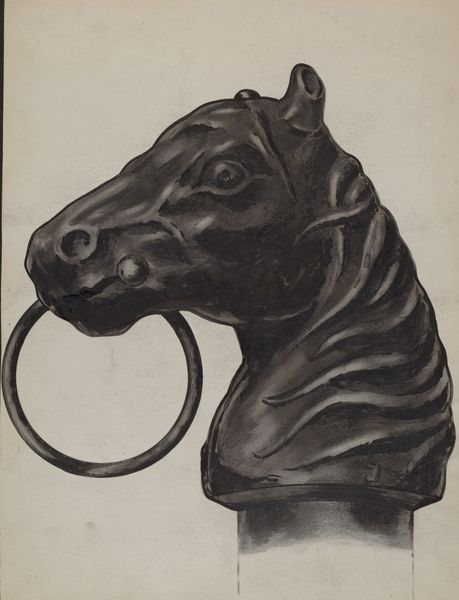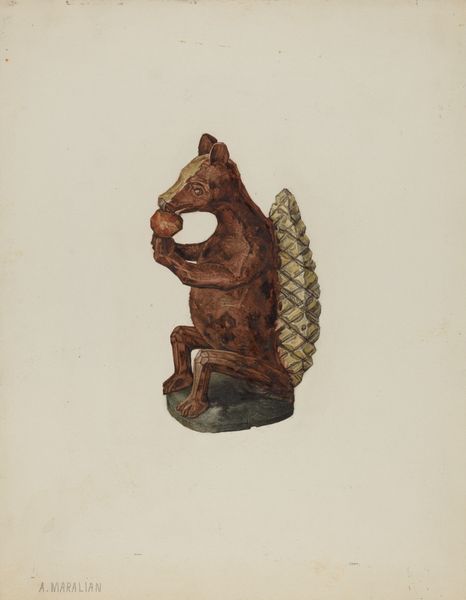
drawing, sculpture, graphite, charcoal
#
portrait
#
drawing
#
sculpture
#
charcoal drawing
#
charcoal art
#
sculpture
#
graphite
#
charcoal
#
charcoal
#
graphite
#
watercolor
#
realism
Dimensions: overall: 48.9 x 36.2 cm (19 1/4 x 14 1/4 in.)
Copyright: National Gallery of Art: CC0 1.0
Editor: So, here we have *Hitching Post*, a graphite, charcoal, and watercolor drawing made sometime between 1935 and 1942. It depicts a horse head sculpture attached to a post with a metal ring. It has a rather solemn feel to it, almost mournful. What do you make of it? Curator: What strikes me is the representation of power and servitude embedded within this single object. The hitching post, seemingly benign, functioned as a tool to subjugate the horse, an animal long associated with strength and freedom, particularly in the American West during this period. This immediately brings up questions of control, exploitation, and the complex relationship between humans and animals in a developing industrial society. Does the artist give us any clues? Editor: It seems pretty straightforward, but I can see your point about that dynamic of power. Do you think the chosen materials, the graphite, charcoal and watercolour have any symbolic function here? Curator: Absolutely! The subdued palette, dominated by grays and browns achieved through charcoal and graphite, may reference the grime of industrialisation, as well as evoke a feeling of weariness, a world of physical labour and animal exploitation, whereas a watercolour finish gives it this melancholic affect you were noticing earlier. The juxtaposition of mediums mirrors the complexity of the scene, inviting us to consider how industry changes identity and autonomy for both humans and animals alike. How does its realism connect with other art from the period? Editor: Thinking about social realism from the period, maybe this wasn't just an object; perhaps, this artwork serves as commentary of larger socioeconomic shifts, depicting perhaps also the hardships experienced by animals working under industrialisation during that time? Curator: Precisely! It pushes us to engage in historical awareness and also cultural interrogation of contemporary labor and treatment towards living things that do so much for us. It’s a deeply charged symbol. Editor: I will never look at a simple horse the same way after your analysis! Thank you for helping me understand the various layers and potential socio-economic messages embedded in the picture. Curator: It was a pleasure, and I hope you gained new perspective to continue developing critical skills in interpreting other images!
Comments
No comments
Be the first to comment and join the conversation on the ultimate creative platform.
